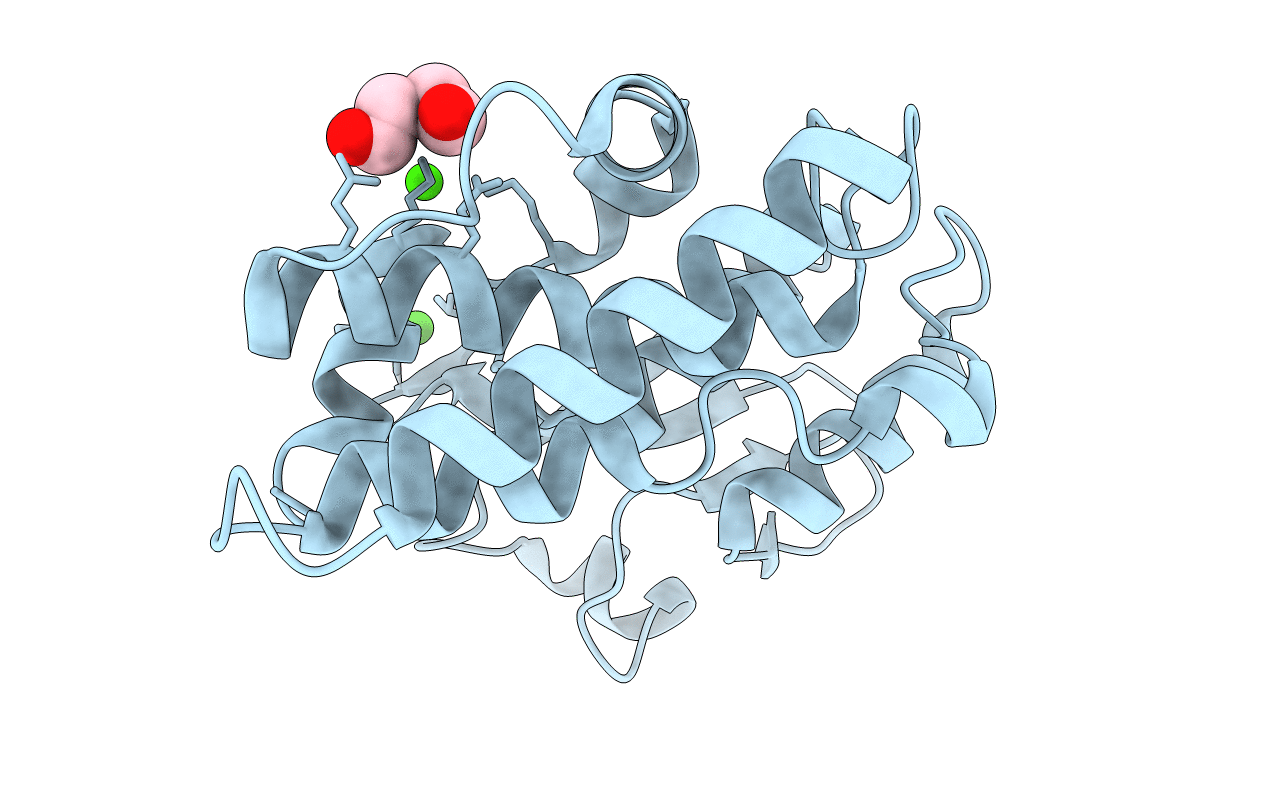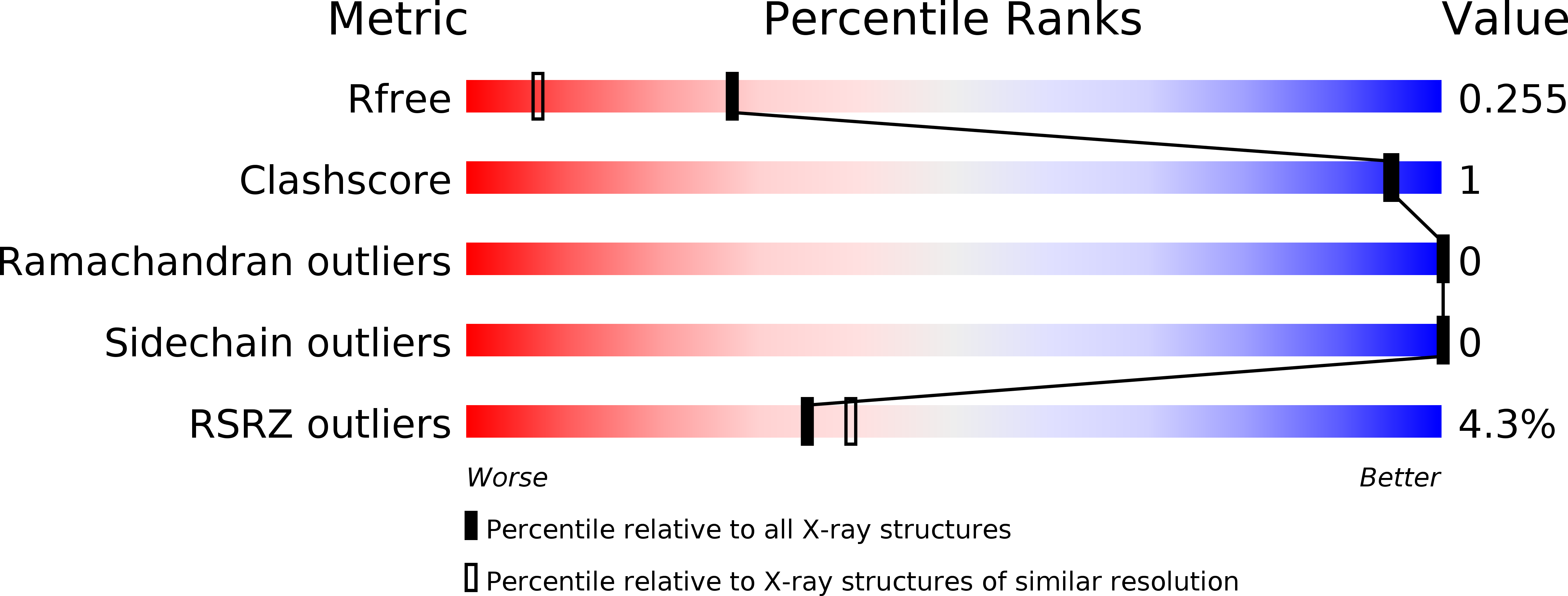
Deposition Date
2015-08-19
Release Date
2016-02-03
Last Version Date
2025-04-09
Entry Detail
PDB ID:
5D9V
Keywords:
Title:
Crystal structure of oxidized dehydroascorbate reductase (OsDHAR) from Oryza sativa L. japonica
Biological Source:
Source Organism:
Oryza sativa subsp. japonica (Taxon ID: 39947)
Host Organism:
Method Details:
Experimental Method:
Resolution:
1.69 Å
R-Value Free:
0.25
R-Value Work:
0.19
R-Value Observed:
0.20
Space Group:
P 1 21 1


